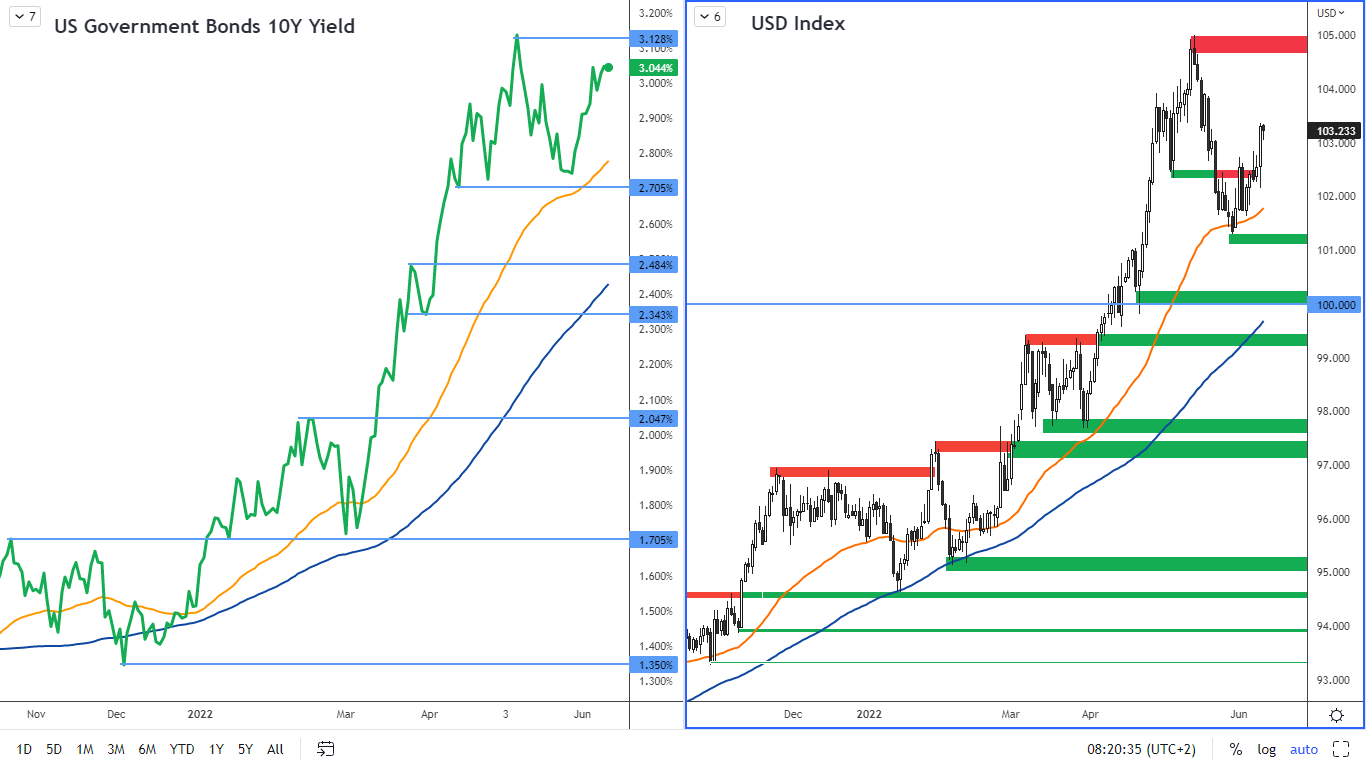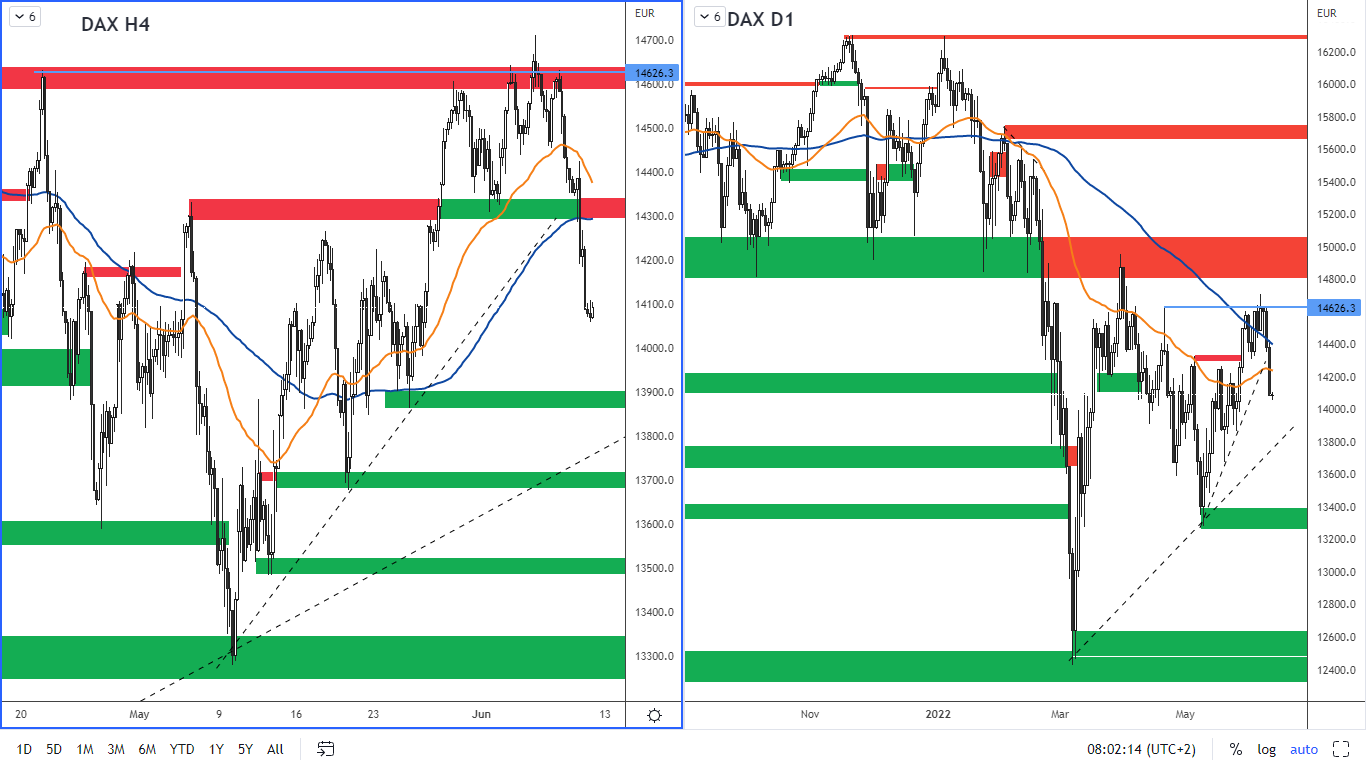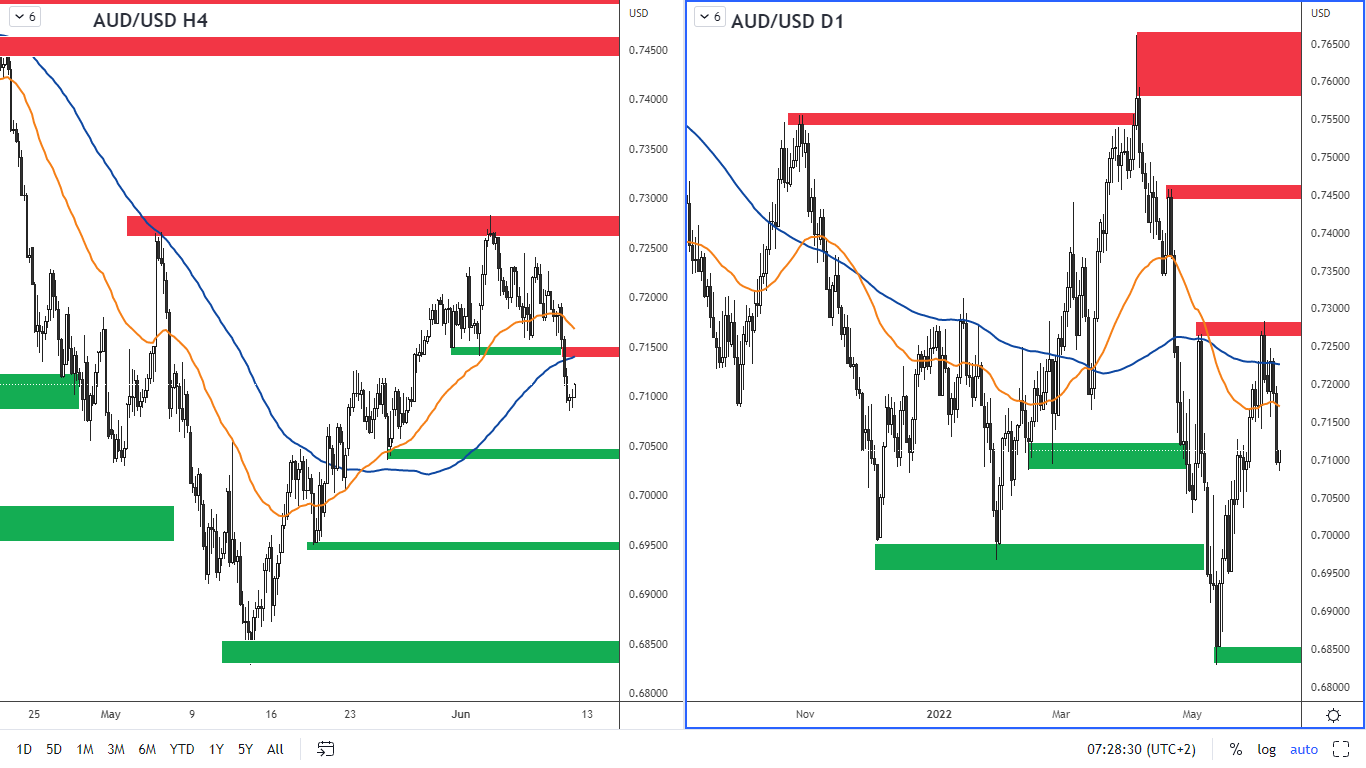The Swing Overview - Week 23
Major global stock indices broke through their support levels after several days of range movement in response to the tightening economy, the ongoing war in Ukraine, slowing economic growth and high inflation. The Reserve Bank of Australia raised its interest rate by 0.50%. The ECB decided to start raising interest rates by 0.25% from July 2022. The winner of last week is the US dollar, which continues to strengthen.
Macroeconomic data
Data from the US labour market was highly anticipated. The job creation indicator, the so-called NFP, surprised the markets positively. Analysts expected that 325,000 new jobs had been created in May. In fact, 390 thousand jobs were created in the US. Unemployment is at 3.6%. The information on the growth of hourly wages, which is a leading indicator of inflation, was important. Average hourly earnings rose 0.3% in May, less than analysts who expected 0.4%.
Unemployment claims reached 229,000 this week. This is the highest levels since 3/3/2022. However, this is not an extreme increase. The number of claims is still in the pre-pandemic average area. Nevertheless, it can be seen that since 7/4/2022, when the number of applications reached 166 thousand, the number of applications is slowly increasing and this indicator will be closely monitored. The ISM index of purchasing managers in the US service sector reached 55.9 in May. This is lower than the previous month's reading of 57.1. A value above 50 still points to expansion in the sector although the decline in the reading indicates economy.
The yield on the US 10-year bond is close to its peak and is currently around 3%. The rise in yields has been followed by a rise in the US dollar. The dollar index has surpassed 103. The reason for the strengthening of the dollar is the aggressive tightening of the economy by the US Fed, which began reducing the central bank's balance sheet on June 1, 2022. In practice, this means that the Fed will let expire the government bonds it previously bought as part of QE and will not reinvest them further. The first tranche of bonds will expire on June 15, so the effect of this operation remains to be seen.

Figure 1: The US 10-year bond yields and USD index on the daily chart
The SP 500 Index
The SP 500 index has been moving in a narrow range for the past few days between 4,200, where resistance is and 4,080, where support has been tested several times. This support was broken and has become the new resistance as we can see on the H4 chart.
 Figure 2: The SP 500 on H4 and D1 chart
Figure 2: The SP 500 on H4 and D1 chart
The catalyst for this strong initiation move is the strong US dollar and rising bond yields. Therefore, the current resistance is in the 4,075 - 4,085 range. The nearest support is 3,965 - 3,970 according to the H4 chart. The next support is 3,879 - 3,907.
German DAX index
Macroeconomic data that affected the DAX was manufacturing orders for April, which fell 2.7% month-on-month, while analysts were expecting a 0.3% rise. Industrial production in Germany rose by 0.7% in April (expectations were for 1.0%). The war in Ukraine has a strong impact on the weaker figures.
The catalyst for breaking support was the ECB's decision to raise interest rates, which the bank will start implementing from July 2022.
 Figure 3: German DAX index on H4 and daily chart
Figure 3: German DAX index on H4 and daily chart
The DAX is below the SMA 100 moving average according to the daily and H4 chart. This shows a bearish sentiment. The nearest resistance is 14,300 - 14,335. Support is at 13,870 - 13,900 according to the H4 chart.
The ECB left the interest rate unchanged
The ECB left interest rates unchanged on June 9, 2022, so the key rate is still at 0.0%. However, the bank said that it will proceed with a rate hike from July, when the rate is expected to rise by 0.25%. The next hike will then be in September, probably again by 0.25%. The bank pointed to the high inflation rate, which is expected to reach 6.8% for 2022. Inflation is expected to fall to 3.4% in 2023 and 2.1% in 2024.

Figure 4: The EUR/USD on H4 and daily chart
According to the bank, a significant risk is Russia's unjustified aggression against Ukraine, which is causing problems in supply chains and pushing energy and some commodity prices up. The result is a slowdown in the growth of the European economy.
The bank also announced that it will end its asset purchase program as of July 1, 2022. This is the soft end of this program, as the money that will flow from matured assets will continue to be reinvested by the bank. In practice, this means that the ECB's balance sheet will not be further inflated, but for now, unlike the Fed’s balance sheet, the bank has no plans to reduce its balance sheet. This, coupled with the more moderate rate hike plans and the existence of the above risks, has supported the dollar and the euro has begun to weaken sharply in response to the ECB announcement.
The resistance is 1.0760-1.0770. Current support at 1.063-1.064 is broken and it will become new resistance if the break is confirmed. The next support according to the H4 chart is 1.0530 - 1.0550.
Australian central bank surprises with aggressive approach
In Australia, the central bank raised its policy rate by 0.50%. Analysts had expected the bank to raise the rate by 0.25%. Thus, the current rate on the Australian dollar is 0.80%. However, this aggressive increase did not strengthen the Australian dollar, which surprisingly weakened. The reason for this is the strong US dollar and also the risk off sentiment that is taking place in the equity indices.
Also impacting the Aussie is the situation in China, where there is zero tolerance of COVID-19. This will impact the country's economic growth, which is very likely to fall short of the 5.5% that was originally projected.
 Figure 5: The AUD/USD on H4 and daily chart
Figure 5: The AUD/USD on H4 and daily chart
According to the H4 chart, the AUD/USD currency pair has broken below the SMA 100 moving average, which is a bearish signal. The nearest resistance is 0.7140 - 0.7150. The support is in the zone 0.7030 - 0.7040.